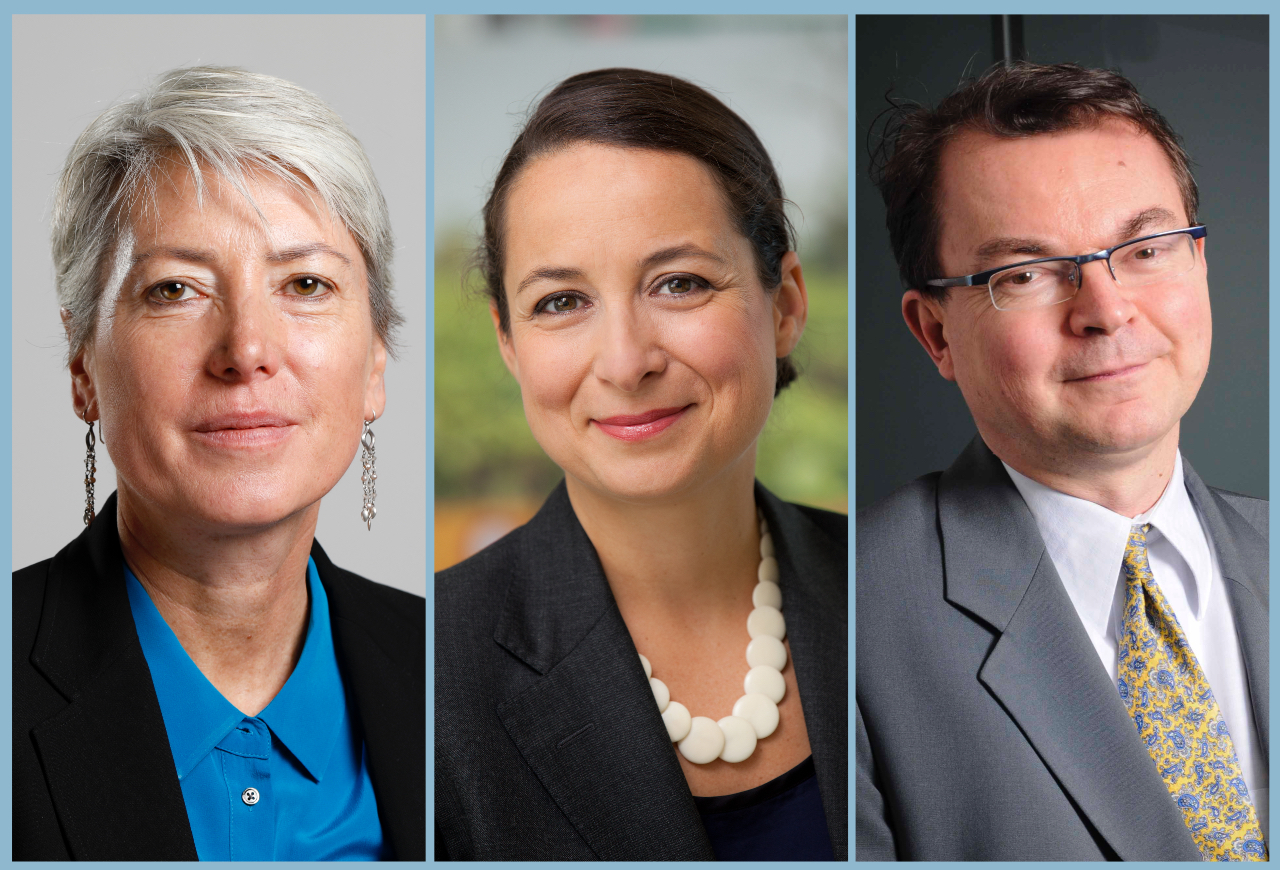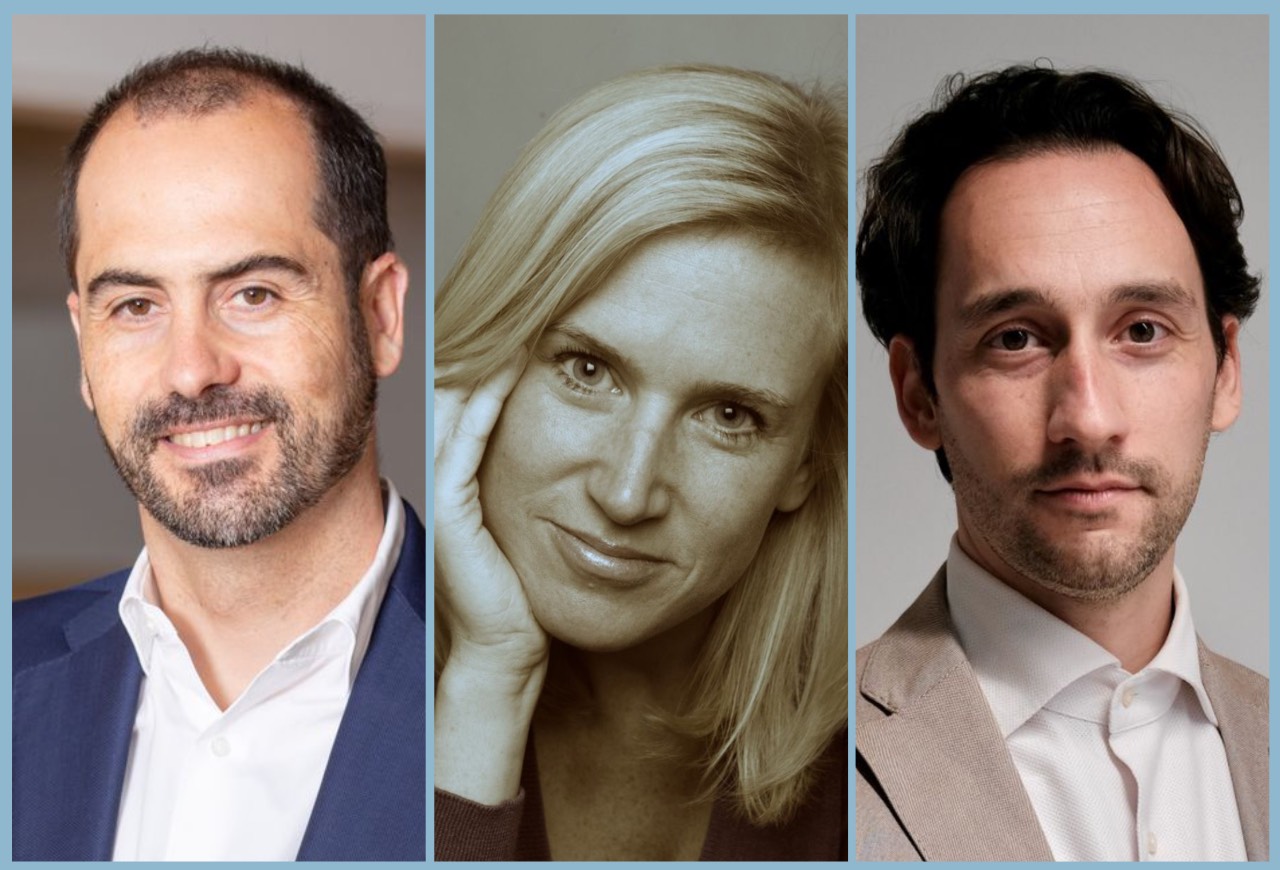The Global Steering Group for Impact Investment (GSG) covers 35 countries through a network of National Advisory Boards (NABs). Three of Europe’s NABs share their views on the progress made so far and future challenges.

UK: Impact Investing Institute
Sarah Gordon, CEO:
The impact investing market in the UK has been growing significantly over the last ten years due to the increasing demand for investments that deliver positive outcomes for people and the planet as well as a financial return. In 2021, we sized the UK impact investing market for the first time. The result showed that it was worth an estimated £58bn (€67bn) in 2020 and suggested funds allocated to im-pact could reach £100bn (€116bn) in five years.
To continue that growth trend, we need to further increase awareness of and provide research, data and tools that support impact investing. Investors, policymakers and regulators need practical tools and best practices so they can integrate impact into their decision-making processes. And improving how impact is measured, managed and reported is critical to ensure that impact investing is effective and accountable as it grows.
We need greater collaboration between government, institutional and social investors so that different sources of capital can work together more effectively to reduce regional inequalities
Sarah Gordon
The transition to a net-zero economy will require huge changes. Unless negative social consequences are mitigated, and opportunities for jobs and communities seized, there will be no widespread public acceptance of these changes, in particular at a time when the world is facing rising energy prices and a cost-of-living crisis. In other words, if it is not a Just Transition, it is not going to happen.
We need to see greater collaboration between government, institutional investors and social investors so that different sources of capital can work together more effectively to reduce regional inequalities across the UK and globally, and deliver positive social and environmental impact as well as a financial return.
Over the last three years at the Impact Investing Institute, we have ramped up our work providing tools, learning and guidance to give pension funds, endowments, and other institutional investors the confidence to put impact investing at the heart of their portfolios.
Through our work on the G7 Impact Taskforce, under the UK’s presidency of the G7, we have created a blueprint for investment vehicles to fund a global Just Transition. In July 2022, we launched our Just Transition Finance Challenge, which brings together leading global financial institutions with over £4trn of assets under management, who are committed to financing a Just Transition.
Together with the Challenge’s 20 founding participants, we are developing a set of criteria to underpin a new Just Transition label for investment pro-ducts that deliver three critical elements of a Just Transition: advancing climate and environmental action (for example, greenhouse gas emission mitigation, reduction and removal), improving socio-economic distribution and equity (for example, inclusive opportunities for decent jobs), and increasing community voice (through, for example, engagement and dialogue with affected communities that are of-ten excluded and marginalised).
Our work on place-based impact investing informed the UK government’s recommendation for a new 5% local investment target for the Local Government Pension Scheme. We are also working with local authorities and Community Development Financial Institutions (CDFIs) to boost place-based impact investing and make it easier for mainstream financial institutions to invest locally and regionally across the UK.
Netherlands: Stichting Netherlands Advisory Board on impact investing
Laure Wessemius-Chibrac, managing director:
Current legislation on capital requirements for institutional investors wanting to invest in impact needs to change. It is too conservative.
The Netherlands is pioneering in a lot of aspects of sustainable development. Many of our institutions have reached the top of their game and are considered world leaders in sustainable or im-pact finance but to achieve the SDGs, that is not enough.
To push impact investing to the next level, what is stopping us is not a lack of leaders but their ability to speak with a range of different stakeholders and co-create solutions to the barriers each one of them is facing. This was the premise for launching the Dutch NAB in November 2020. We wanted to bring the ‘unusual suspects’ together to build solutions that will push impact investing to the next level.
Current legislation on capital requirements for institutional investors wanting to invest in impact needs to change. It is too conservative.
Laure Wessemius-Chibrac
To give an example, institutional investors in the Netherlands have the biggest potential to scale up their impact investments with by far the largest absolute volume of total assets under management, but many are stopped in their tracks by the perceived risk of in-vesting in impact portfolios. Currently only 4-6% of their assets go to impact investing. By working together with the public sector, we can find solutions to reduce these risks.
Current legislation on capital requirements for institutional investors wanting to invest in impact also needs to change. It is too conservative, based on the assumption that because a lot of the risks related to the asset classes used by impact investors have little to no data, that it must be high risk.
One of our working groups is leading a project to unravel this idea by comparing the track record of our members’ investments in emerging market private debt, with current regulation. Their aim is to demonstrate that the latter is at a much higher level of perceived risk than where the real risk is.
That difference means that a lot more capital has to be mobilised by institutional investors today than is necessary. If we can reduce these requirements, then institutional investors can make a lot more investments for impact for the same amount of capital.
Another limitation lies in market efficiency. We lack data sharing, we lack deal pipeline sharing, we lack accepted norms and standards. There’s already some work being done, but we need to go much further. Of course, this is about a global effort and the Netherlands is contributing ideas and best practices from their own pioneers.
The third barrier in the Netherlands is our excessively conservative investment culture. Institutional investors cannot satisfy themselves with doing good simply by running a sustainable investment portfolio. To achieve the SDGs and protect their investments in the longer term, investors need to have a close look at the impact of their investments on the outside world. The concept of double materiality is still not wholly understood in the Netherlands, so we have a lot of ground to cover.
The good news is that we have seen closer participation between market participants, supported by a lot of best practice sharing, peer learning and our impact report published earlier this year. I also think the pandemic, the energy crisis, as well as the drought experienced across Europe this summer, has thrown a spotlight on the important role of impact investing and company boards are finally waking up to the fact that they need to act.
France: French National Advisory Board
Cyrille Langendorff, managing director:
What is unique about impact investing in France is that it has been, to a large extent, propelled by savings made by private individuals thanks to the introduction of 90/10 funds in 2001. These funds added a third option to employee savings schemes beyond traditional equity and bond investments, with 90% of an employee’s savings invested in listed securities and the remaining 10% in unlisted social enterprises.
Where we are seeing a lot of growth more recently, is with the explosion of private equity impact funds focusing on social impact
Cyrille Langendorff
Today, 90/10 funds account for the majority of solidarity-based investment savings in France with more than 1 mil-lion retail investors owning a solidarity-based savings product, but that’s still a very small amount. According to our most recent figures, savings across all solidarity-based financial instruments reached €24.5bn at the end of 2021. This is a 27% increase year-on-year, which is great but only represents 0.42% of total French savings.
Where we are seeing a lot of growth more recently, is with the explosion of private equity impact funds focusing on social impact. Our latest figures show that the impact investment market in France has grown from €4.4bn in 2019 to €6.1bn at the end of 2021, that’s an increase of almost 50% in just two years, with a marked increase in contributions from private equity funds. This is very encouraging but we have much further to go.
Impact Invest Lab, the French NAB’s operational platform, merged with social finance association Finansol last year to create a new association called FAIR. Over the past year as FAIR, we have been working closely with the French government, which created its own national impact task- force of 200 experts to develop the French impact economy.
FAIR’s own positioning is that we continue to focus on social impact invest-ment and we are advising the government and other stakeholders on the development of innovative tools such as payment by results schemes. We have also been working with the Ministry of Economics and Finance onthe launch of social impact bonds, and with the Ministry of Europe and Foreign Affairs on the role of impact investment in development finance.
We were very pleased to see the launch of France’s first development impact bond earlier this year focusing on wo-men’s health and education in Ethiopia, launched by BNP Paribas and Agence française de développement in partnership with CARE International. Elsewhere, we have been taking part in the impact accounting standards debate between the International Sustainability Standards Board (ISSB) and the European Financial Reporting Advisory Group (EFRAG) and drawing our members’ attention to this important issue.
Looking ahead, we expect discussions around the definitions of ESG, SRI and impact to continue. As the impact investing arena grows, we are also looking at how to integrate new members and address the issue of impact washing, which I expect will present some challenges in the future.

This article is part of the editorial content of the Impact Investor Guide 2023. You can download a digital copy of the guide here.







